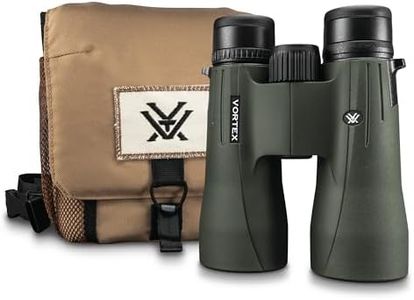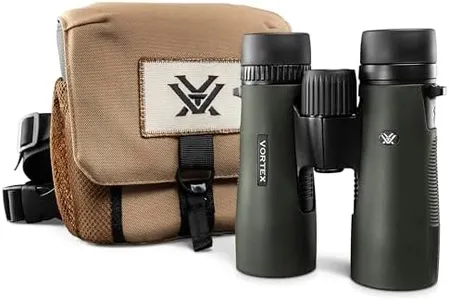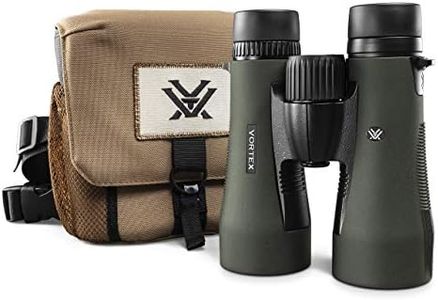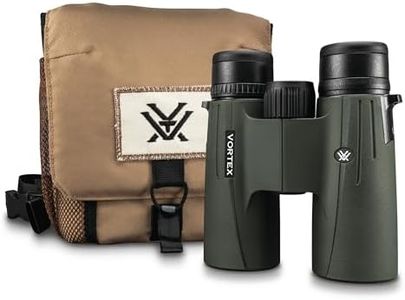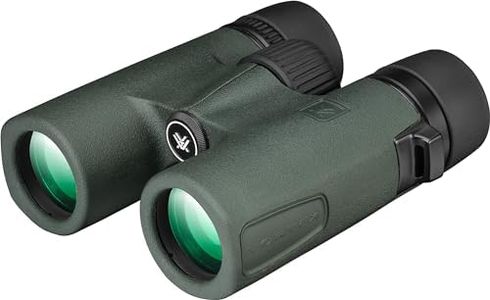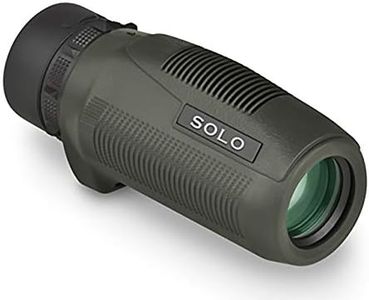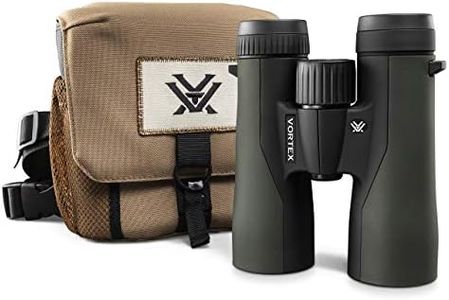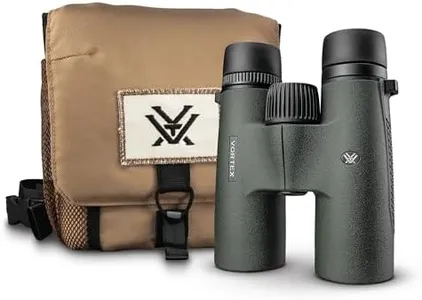We Use CookiesWe use cookies to enhance the security, performance,
functionality and for analytical and promotional activities. By continuing to browse this site you
are agreeing to our privacy policy
10 Best Vortex Binoculars
From leading brands and best sellers available on the web.Buying Guide for the Best Vortex Binoculars
When shopping for binoculars, especially from a quality brand like Vortex, it's important to understand what features will make them a good fit for how and where you plan to use them. Instead of just going for the most expensive or advanced model, consider your intended activities—like birdwatching, hiking, hunting, or watching sports—and pick the specs that compliment those needs. Balancing the main features will help you get the most enjoyment and value from your binoculars.Magnification and Objective Lens SizeThis spec is usually written as two numbers, such as 8x42 or 10x50. The first number is the magnification, showing how many times closer you will see objects. The second number is the size of the objective lens in millimeters, affecting both brightness and size. Lower magnification (like 8x) gives you a wider field of view and is easier to hold steady—good for general wildlife watching. Higher magnification (like 10x or above) brings things closer, but makes images shakier and narrows your view, best suited for long-distance observation. For lens size, larger objectives gather more light, making them better for low-light conditions, but they also make binoculars heavier. Choose a balance depending on your hand strength, where you'll use them, and what you want to observe.
Field of ViewField of view (FOV) tells you how wide an area you can see through the binoculars from a certain distance, often measured in feet at 1000 yards or meters at 1000 meters. A wider FOV makes it easier to spot and track moving subjects, which is great for birders or sports and events. A narrower FOV focuses more on detail but makes it harder to find or follow subjects. Think about whether you're watching quick or distant things, and pick accordingly.
Weight and SizeThe weight and physical size of the binoculars determine how comfortable they are to carry and use, especially on long outings or when traveling. Lighter, more compact binoculars are easier to hold for long periods and to pack, but may sacrifice some performance in low light. Heavier models, with larger lenses, offer better image brightness and detail but might cause fatigue during extended use. Match the weight and size to your endurance levels and the activities you'll be doing.
Waterproofing and DurabilityWaterproofing means the binoculars are sealed against rain and splashes, while construction quality relates to how well they handle drops or rough handling. If you plan to use your binoculars outdoors—in all weather, near water, or in rugged conditions—look for waterproof and fog-proof features, often indicated by labels like 'O-ring sealed' or 'nitrogen purged'. If you'll mainly use them indoors or in calm environments, this is less crucial. Consider how much exposure to the elements your binoculars will get when picking.
Eye ReliefEye relief is the distance from the eyepiece where you can still see the whole field of view. Longer eye relief is especially important for people who wear glasses, as it lets you see comfortably without removing your glasses. Standard values range from about 10mm to 20mm; look for at least 15mm if you wear glasses. If not, this isn't as urgent, but more eye relief can still make viewing more comfortable for everyone.
Prism TypeBinoculars use prisms to flip the image the right way up. There are two main types: roof prisms and porro prisms. Roof prism binoculars are usually more compact and straight-barreled, making them lighter and easier to pack, but sometimes cost more for the same optical quality. Porro prisms tend to be bulkier but can offer great value and depth perception. Choose roof prisms for portability, and porro prisms if size and weight are less of a concern.

